Private First Class Felipe Sanchez
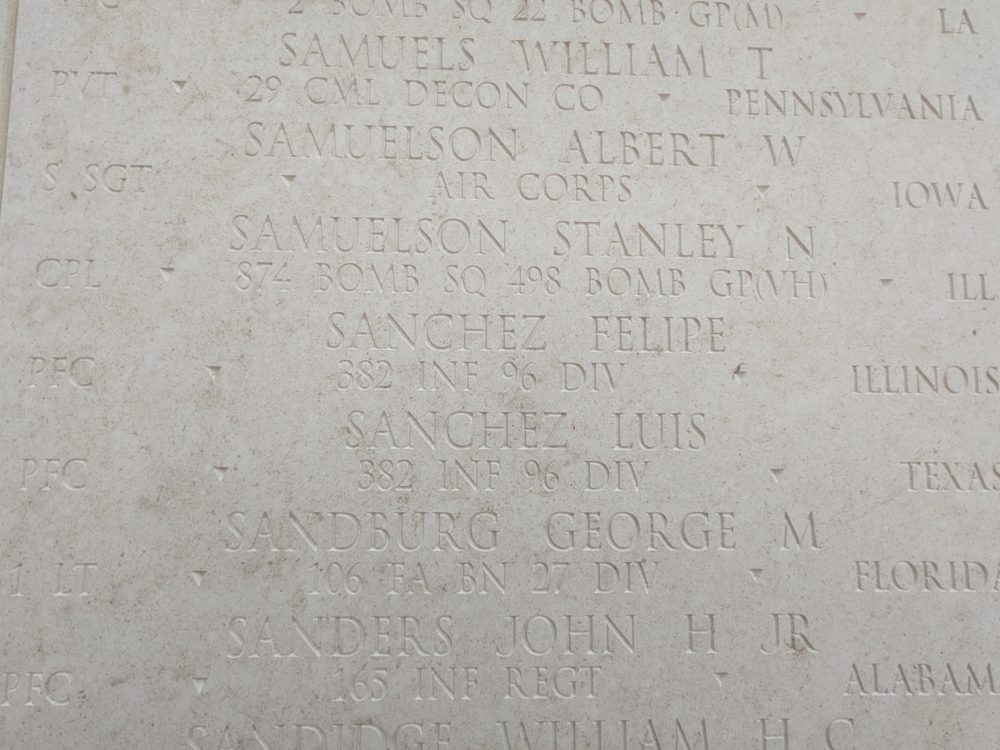
- Unit: 96th Infantry Division, 382nd Infantry Regiment, Company B
- Service Number: 36624741
- Date of Birth: May 16, 1907
- Date of Death: April 25, 1945
- Hometown: Nuevo Leon, Mexico and Chicago, Illinois
- Place of Death: Philippine Sea, off the coast of Okinawa
- Award(s): Bronze Star with Oak Leaf Cluster, Purple Heart with Oak Leaf Cluster
Mentored by Mr. Josue Contreras
Wheaton North High School
2022/2023
Early Life
Felipe Sanchez was born in Nuevo Leon, Mexico, on May 16, 1907. In 1923, Sanchez migrated to the United States, settling in Nueces, Texas. There Sanchez lived with his aunt, uncle, and two cousins while working as a cotton picker. After working in Texas, Felipe Sanchez moved to Chicago, Illinois. While in Chicago, he worked as an unskilled laborer for Inland Steel Company at their Indiana facility. This is where he met his best friend, Jesus Cervera, who lived with him at Hull House. Hull House provided a safe haven for Mexican immigrants working in Chicago.
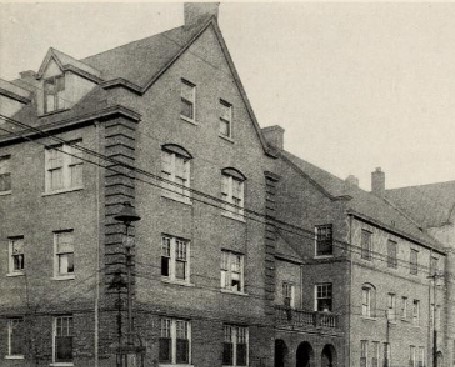
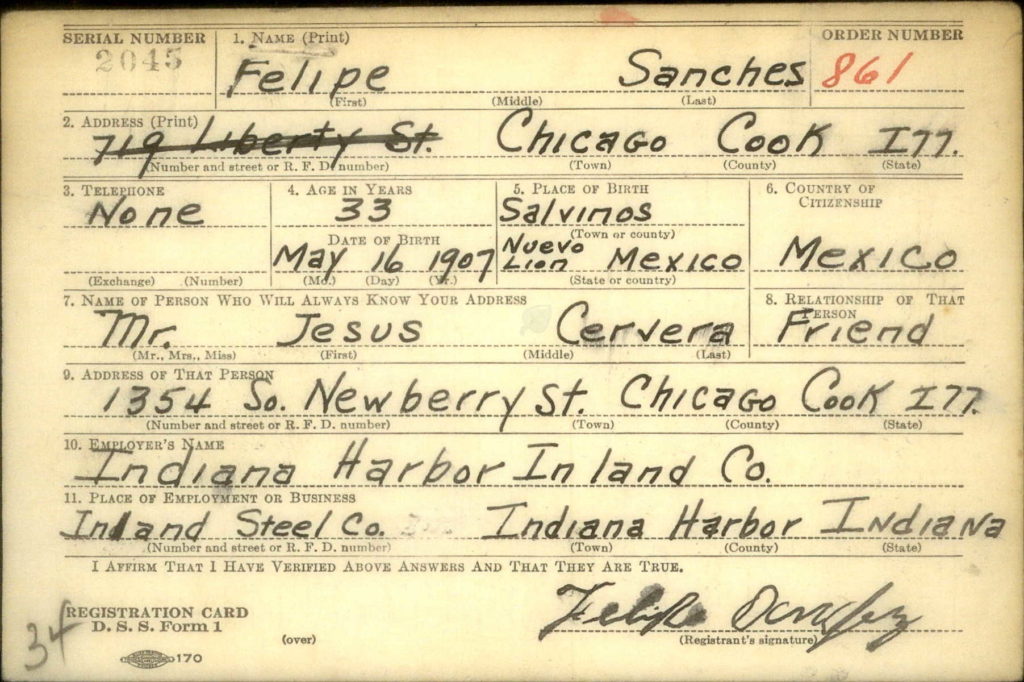
Homefront
Private First Class Sanchez’s home country of Mexico cut ties with the Axis powers after the bombing of Pearl Harbor. Mexico decided to strengthen ties with America. Private First Class Sanchez’s home state of Nuevo Leon was a significant producer of steel and raw minerals, which the United States needed for the war.
The city of Chicago, where Sanchez lived and worked before entering the military, was the second largest producer of war goods during World War II. Chicago had over 1,400 factories producing war goods. During the war, 15,000 Mexican nationals living in the United States were drafted into the U.S. military. More than 1,300 died in the conflict, many in combat. Later the Mexican Air Force participated in the liberation of the Philippines.
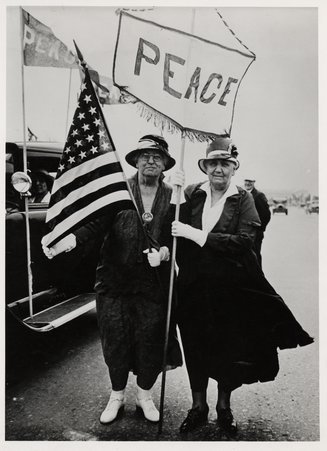
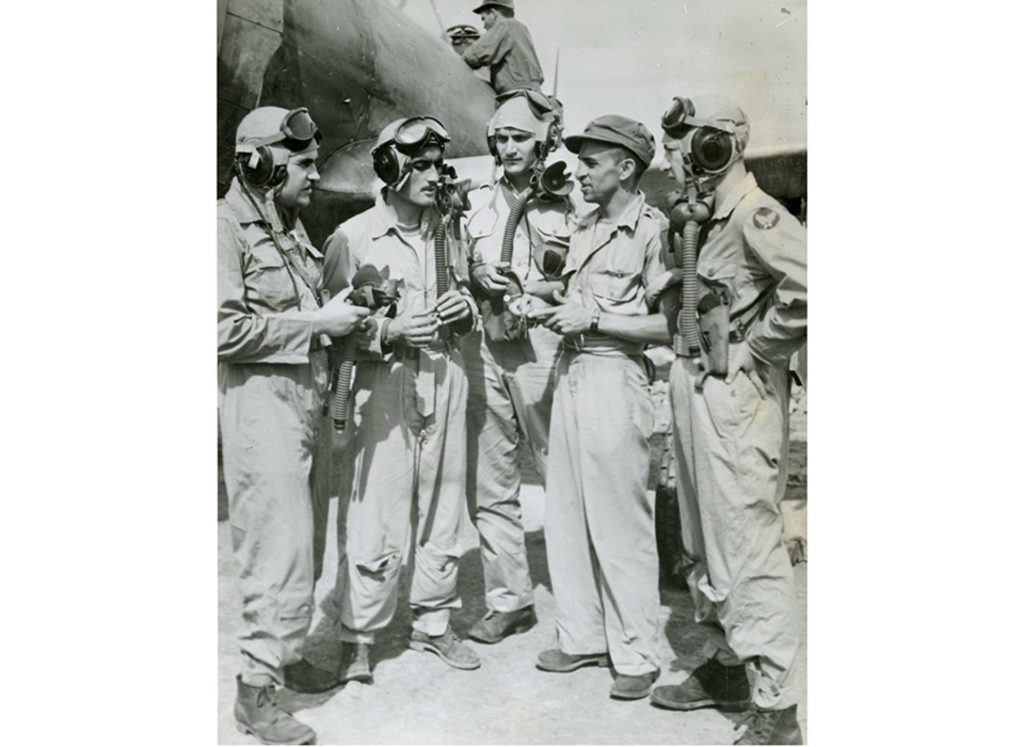
Military Experience
Felipe Sanchez enlisted in November of 1942. After basic training, he earned the rank of private first class and was sent to three camps for various training. These camps included Camp Roberts, California (March 1943–November 1943), Camp Adair, Oregon (November 1943–December 1943), and Camp White, Oregon (December 1943–March 1944). After training, Private First Class Sanchez left for Leyte on September 20, 1944, arriving there on October 20, 1944. Sanchez fought in many small battles receiving a Bronze Star and a Purple Heart for performing heroic acts in the battlefield.
After the campaign in Leyte, Private First Class Sanchez was assigned to move to Okinawa and Operation Iceberg. The objective was to attack the island and take control of the airfields. Sanchez fought in two important battles, Clay Ridge and Tombstone Ridge. The United States troops were successful in the battle of Tombstone Ridge and were able to move inland. Initially, the first attempt by the Allied forces was foiled, forcing the American troops to fall back. But another attempt carried out nine days later was a success. Unfortunately, Private First Class Sanchez was wounded on the last attempt to take Tombstone Ridge. He was taken to the USS Okanogan, passed away from his wounds on the ship, and was buried at sea.
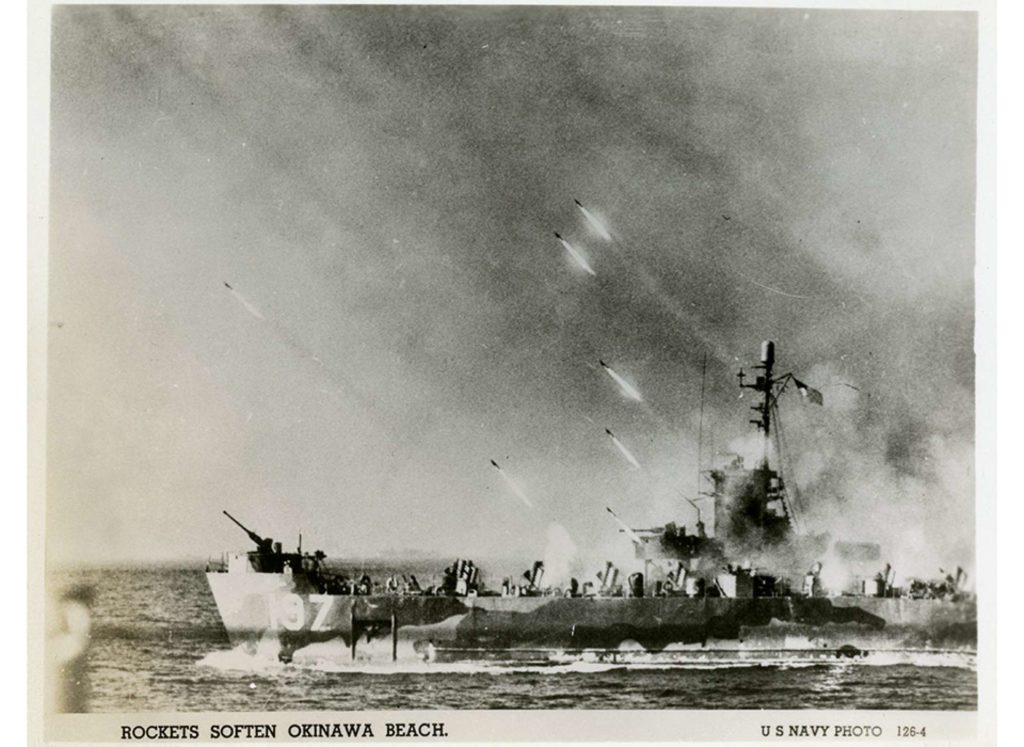
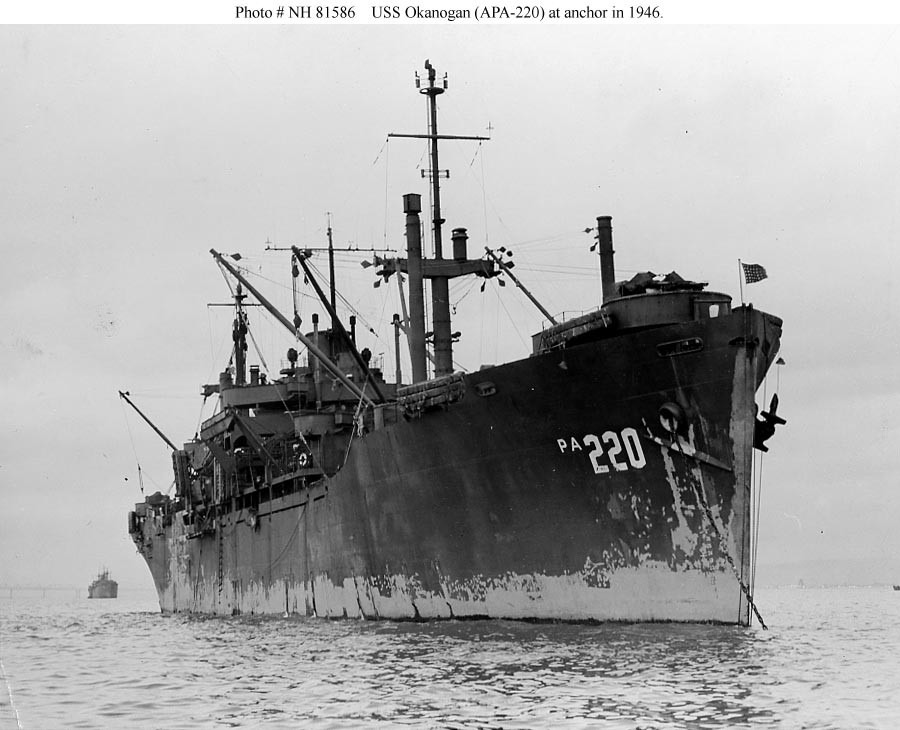
Eulogy
Private First Class Sanchez was born in Nuevo, Leon Mexico, and eventually immigrated to Chicago, where he worked in a steel mill. Sanchez like many immigrants new to Chicago, found a safe haven at the Hull House. October 16, 1940 while living at the Hull House, Felipe Sanchez and his friend, Jesus Cervera, registered for the United States military draft.
In late 1942, Felipe Sanchez was processed for active military service. He received training at three different camps, including Camp Roberts in California, and Camp Adair and Camp Abbott in Oregon. On September 20, 1944 Private Sanchez departed for Leyte arriving a month later on October 20,1944. Participating in many battles, he helped American Forces seize Leyte from the Japanese.
While fighting Private First Class Sanchez performed a heroic act and was awarded a Bronze Star and a Purple Heart. After the success of Leyte, Private First Class Sanchez moved to Okinawa and was wounded in the battle of Tombstone Ridge. Even though he was rushed to the USS Okanogan, Private Sanchez died of his wounds and was buried at sea. Private First Class Sanchez’s story deserves to be heard. He put his life on the line for a country that was not his in an effort to help America win the war.
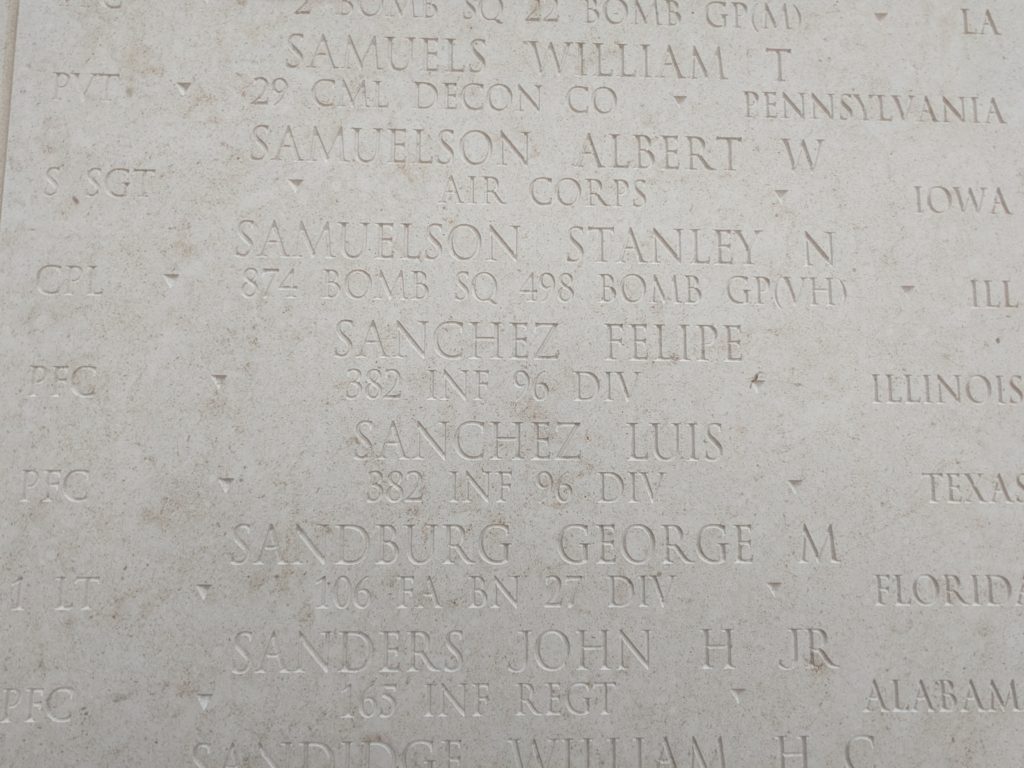
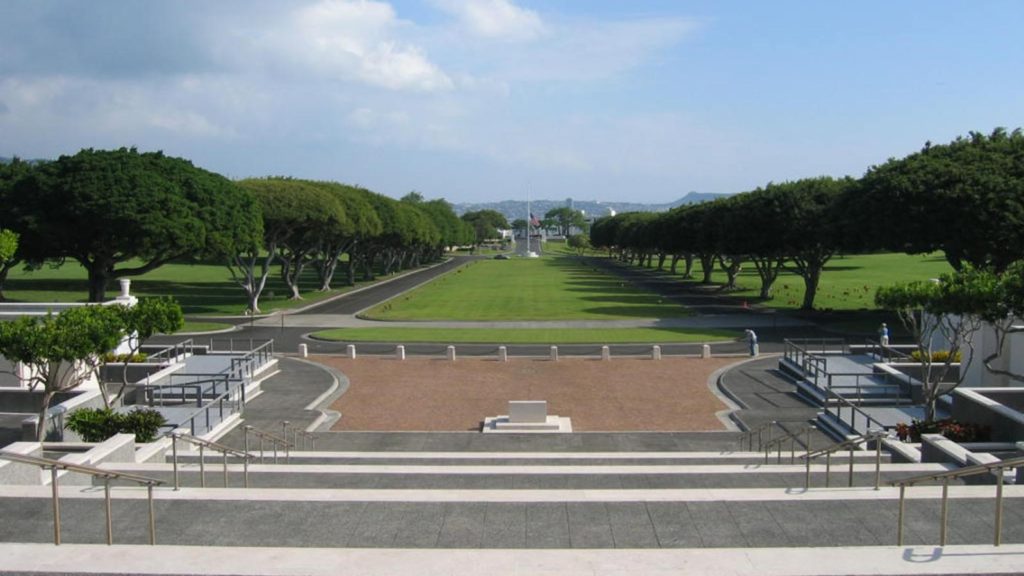
Reflection
I learned about many stories from both the perspectives of World War II and what was happening on the homefront in America. I studied about different campaigns and battles that my Silent Hero fought in, such as Leyte and Okinawa. My favorite part of this project was the stories from the Japanese History Museum. From the museum, I learned about how the United States mistreated Japanese Americans and other Asian Americans during the war. I also enjoyed hearing the different stories about the many Silent Heroes. From all the research and stories, I learned one important lesson. I learned that when you don’t want to do something or it is hard, you stand up and be the bigger person. This is what I will apply not just to my community and school, but in my own life.
Bibliography
Primary Sources
Aztec Eagles pilots Lt. Raul Garcia Mercado, squadron commander Capt. Radames Gaxiola, Lt. Manio Lopez Portillo, Capt. Pablo Rivas Martinez and Lt. Roberto Urias Abelleyka review a mission plane before takeoff at Luzon. Photograph. July 1945. Gift in Memory of Isaac Utley, The National WWII Museum (2012.019.234). https://www.nationalww2museum.org/war/articles/aztec-eagles-mexican-air-force.
Felipe Sanchez, Individual Deceased Personnel File, Department of the Army.
Felipe Sanchez. U.S., World War II Draft Cards Young Men, 1940-1947. Digital images. https://ancestry.com.
García Cubas, Antonio. Diccionario geográfico, histórico y biográfico de los Estados Unidos Mexicanos. México: Universidad Nacional Autónoma de México, 2015.
Halsted Street view of Hull – House, looking north. Photograph. Hull-House Year Book, September 1, 1906–September 1, 1907. Chicago: Hull-House, 1907. https://archive.org/details/hullhouseyearboo1906hull/page/6/mode/2up.
Hull-House Year Book, September 1, 1906–September 1, 1907. Chicago: Hull-House, 1907. https://archive.org/details/hullhouseyearboo1906hull/page/6/mode/2up.
LSM(R)-97 firing rockets at Okinawa Beach, Japan. Photograph. 1945. Gift in memory of Sergeant Lyle E. Eberspecher, The National WWII Museum (2013.495.782). https://www.nationalww2museum.org/war/topics/battle-of-okinawa.
Mary McDowell and Jane Addams, holding flags for peace. Photograph. c.1920s. Chicago History Museum (ICHi-009371). https://images.chicagohistory.org/search/?searchQuery=mary+McDowell+and+Jane+Addams%2C+holding+flags.
National Memorial Cemetery of the Pacific, Honolulu, Hawaiʻi. Photograph. December 22, 2005. Wikimedia Commons. https://commons.wikimedia.org/wiki/File:Punchbowl_(1237).JPG.
Texas. Nueces County. 1930 U.S. Census. Digital images. http://ancestry.com.
USS Okanogan. Photograph. 1946. Naval History and Heritage Command (NH 81586). https://www.history.navy.mil/content/history/nhhc/our-collections/photography/numerical-list-of-images/nhhc-series/nh-series/NH-81000/NH-81586.html.
Secondary Sources
Astor, Gerald. Operation Iceberg: The Invasion and Conquest of Okinawa in World War II-An Oral History. New York: Dell Publishers, 1995.
Canon, M. Hamlin. Leyte: The Return To the Philippines. Washington, D.C.: U.S. Army Center of Miltary History, 1993. https://history.army.mil/html/books/005/5-9-1/CMH_Pub_5-9-1.pdf.
Craig, Scott. “Remembering Chicago: World War II.” 2003. Video File, 1:08:34. WTTW Public Broadcasting Corporation. March 25, 2004. https://www.pbs.org/video/wttw-documentaries-remembering-chicago-world-war-ii/.
Davidson, Orlando, J. Carl Willems, and Joseph A. Kahl. The Deadeyes: The Story of the 96th Infantry Division. Washington, D.C.: Infantry Journal Press, 1947.
Dencker, Donald O. Love Company: Infantry Combat Against the Japanese, World War II: Leyte and Okinawa: Company L, 382nd Infantry Regiment, 96th Infantry Division. Lawrence: Sunflower University Press, 2002.
Duis, Perry R. “World War II.” Encyclopedia of Chicago, The Chicago Historical Society, Updated 2005. Accessed August 25, 2023. http://www.encyclopedia.chicagohistory.org/pages/1384.html.
“Felipe Sanchez.” American Battle Monument Commission. Accessed May 7, 2023. https://www.abmc.gov/decedent-search/sanchez%3Dfelipe.
Graff, Cory. “Curator’s Choice: Aztec Eagles Over the Pacific.” The National WWII Museum. Updated September 27, 2023. Accessed August 25, 2023. www.nationalww2museum.org/war/articles/aztec-eagles-mexican-air-force.
Hernandez-Fujigaki, Jorge. Mexican Steelworkers and the United Steelworkers of America in the Midwest: The Inland Steel Experience (1936-1976). Ph.D. Thesis, University of Chicago. 1991.
“History of the Base: Camp Roberts.” Camp Roberts Historical Museum. Accessed August 25, 2023. https://camprobertshistoricalmuseum.com/history-of-the-base/.
“Illinois at War.” Illinois State Archives. Updated 2023. Accessed April 1, 2023. https://www.ilsos.gov/departments/archives/teaching_packages/illinois_at_war/home.html.
Lewis, Robert. “World War II-Countries of the World-Mexico.” Britannica. Accessed April 13, 2023. https://www.britannica.com/place/Mexico/World-War-II-1941-45.
Pruitt, Sarah. “The Surprising Role Mexico Played in World War II.” HISTORY®. Updated September 14, 2020. Accessed August 25, 2023. https://www.history.com/news/mexico-world-war-ii-surprising-involvement.


